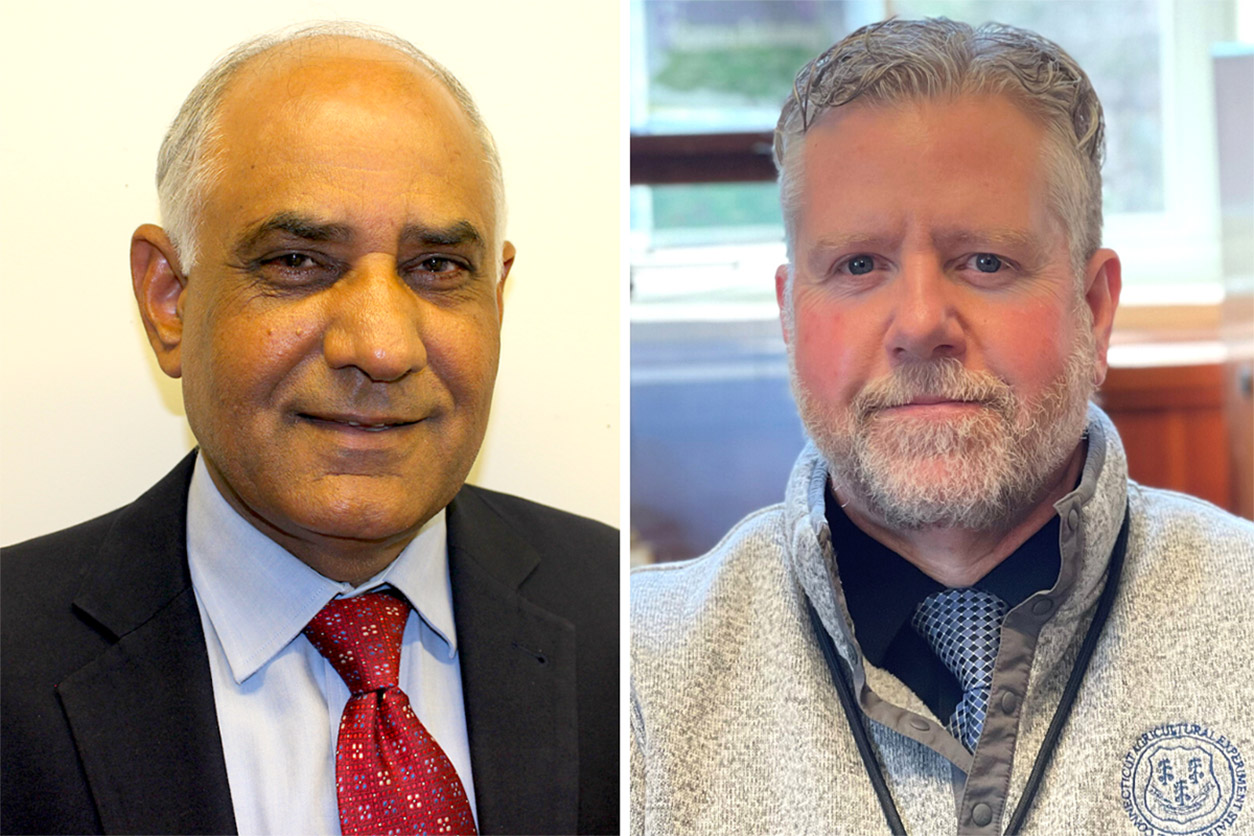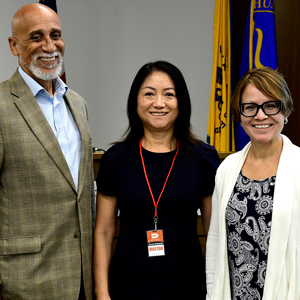In October 2022, researchers published key findings from a workshop held earlier in the year that discussed ways to reduce human exposure to toxic elements in food. Sponsored by the United States Department of Agriculture (USDA) and organized by two scientists supported by the NIEHS Superfund Research Program (SRP), the event focused on several themes: toxic element uptake and accumulation in plants; metal-soil interactions and cleanup; and food production and processing.
More than 35 experts from academia and industry participated, examining gaps in research and options to fill them. For the organizers — Om Parkash Dhankher, Ph.D., a professor in the Stockbridge School of Agriculture at the University of Massachusetts Amherst, and Jason C. White, Ph.D., who directs the Connecticut Agricultural Experiment Station — the two-day workshop underscored a priority to bridge research disciplines.

“The problem of metals in food is too big for research programs to work on in silos,” White said. “We need interdisciplinary teams of soil chemists, plant biologists, plant physiologists, agronomists, people who do risk communication, and people who do extension and outreach to address all of these issues, from different directions, under the same roof.”
A dietary dilemma
The presence of toxic elements in food is a global health challenge. Exposure to heavy metals such as lead, mercury, and cadmium, as well as the metal-like element arsenic, is associated with various health challenges — immune deficits, cancer, and neurological disorders among them.
Disease susceptibility depends on the type, duration, and amount of exposure as well as a person’s age. Babies, for example, are more vulnerable to the harmful effects of toxic metals in food because of their small bodies and high metabolism.
In 2017, a team of researchers including Brian Jackson, Ph.D., of the Dartmouth College SRP Center, found that an assortment of rice-containing baby cereals and teething biscuits were a dietary source of both mercury and arsenic.
Following that finding, an SRP-funded team led by Margaret Karagas, Ph.D., also of the Dartmouth SRP Center, published a 2022 study suggesting that earlier introduction of baby rice cereal into an infant’s diet was associated with increased risks of respiratory infections and allergy.
“These studies highlight a critical area of research in the field of dietary toxic metals,” said Heather Henry, Ph.D., a health scientist administrator for the NIEHS SRP. “Protecting the next generation is paramount.”
Filling in gaps
Metals end up in food for many reasons, including a plant’s propensity for absorbing them from the soil; the geographical features and contamination history of cropland; water quality; and any agricultural or industrial processes involved.
One recommendation in the USDA report called for practical, cost-effective, and sustainable approaches to soil management. To that end, Dhankher and White are working with Baoshan Xing, Ph.D., also of the University of Massachusetts Amherst, to develop an approach to soil remediation that is rooted in nature.
With SRP funding, the team is modifying a species of fast-growing plant called oilseed to absorb and concentrate arsenic in its stems and leaves. In effect, the plants would become metal reservoirs that, once harvested, could be safely destroyed through incineration. After removing the metal-laden oilseed, farmers could theoretically plant edible crops in the remediated soil.
“Because of its short lifecycle, oilseed could be grown between other crop cycles, like rice and wheat,” Dhankher said.
Ultimately, his team hopes to fine-tune the technology for global application.
“This is what I call a suitcase strategy,” Dhankher said. “We can replicate this genetic approach in plants that grow in different climates around the world.”
Dhankher’s team is also using supplemental SRP funding to examine arsenate reductase, a plant protein involved in arsenic transport. The hope is to inform genetic strategies for developing food plants that concentrate less metal in their edible tissues — a research area that the USDA report also highlighted.
“I believe this area is, and will be, very important for future food safety,” said Julian Schroeder, Ph.D., of the University of California, San Diego SRP Center, who facilitated a workshop discussion on metal uptake and accumulation in plants.
With SRP support, Schroeder and colleagues published a seminal study in 2010 identifying two genes required for arsenic resistance in plants. When both genes were deleted from the plant’s DNA, the plants could not accumulate arsenic in important cellular structures called vacuoles.
Workshop participant Mary Lou Guerinot, Ph.D., of Dartmouth College, is also studying ways to reduce toxic element buildup in food crops. In 2021, Guerinot published a study funded in part by SRP that uncovered new pathways for arsenic detoxification.
“We are working to develop rice cultivars that restrict arsenic and cadmium accumulation in the grain,” she explained. “Those could immediately be used in contaminated soils, as well as be suitable genetic stock for breeding programs for modern commercial rice production.”
For her part, Guerinot sees the USDA report as a clarion call for researchers in myriad fields.
“I am hopeful that this workshop leads to a call for proposals addressing the pressing problem of toxic metals in food.”
(Julie Leibach is a senior science writer at MDB, Inc., a contractor for the NIEHS Division of Extramural Research and Training.)










